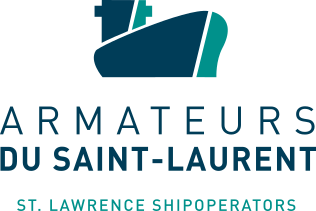Overview
In recent years, interactions between marine mammals and ships have been more prevalent in scientific research, the media and shipping’s operational reality.
Shipping is known to represent a growing threat to marine mammals due to the risk of fatal collisions and ship-generated underwater noise. The latter interferes with the sounds these animals emit, thereby garbling the communications they depend on to guide and feed themselves, reproduce and socialize. The fact that many species, such as the beluga and North Atlantic right whale, are now threatened or endangered in the St Lawrence makes these issues particularly worrisome.
For years, ship owners and operators navigating the St. Lawrence have collaborated proactively with the various stakeholders concerned to identify and implement realistic, effective solutions based on scientific findings.
Collision risks
Vessel speed affects the degree of fatality in ship strikes involving marine mammals. The risk of serious injury or death in marine mammals colliding with ships navigating at 17 knots is estimated at 90%, compared to 31% for ships travelling at 10 knots.
This knowledge was used by the Working Group on Marine Traffic and Protection of Marine Mammals (G2T3M) – composed of scientists, the regulatory authorities concerned and the marine industry, including SLS–in 2011 to develop voluntary speed reduction measures in the St. Lawrence Estuary, which is home to a resident beluga population as well as other threatened species, like the blue whale.
These measures, which include a slowdown area at the head of the Laurentian Channel off Tadoussac and an area to be avoided downstream of Les Escoumins, have been in effect since 2013 and have resulted in an almost 40% decrease in collision risks. Source: Fisheries and Oceans Canada.
More recently, SLS collaborated actively with other industry partners, with the support of scientific researchers, to propose speed reduction measures for the 2018 season to the Canadian government to protect the North Atlantic right whale. Based on the latest available knowledge, these measures aim to protect marine mammals while minimizing the impact on the marine industry.
For years, many SLS members have supported research projects to enhance knowledge about marine mammal behaviour, habitat and range.
Furthermore, since 2015, Green Marine and the Marine Mammal Observation Network (MMON) have spearheaded an awareness campaign on board Canadian ships, training crews in whale-watching and in what to do in case of an encounter.
Underwater noise
Given the fragile status of certain marine mammal species and the increase in shipping traffic linked to economic growth, the issue of underwater noise must be taken seriously. A number of variables remain to be studied before establishing best practices to adopt. Although various marine industry-specific technological and operational constraints complicate the search for solutions, the industry is being proactive.
Based on the guidelines published by the International Marine Organization (IMO) and Green Marine’s underwater noise performance indicator, many ship owners and operators have already voluntarily implemented promising measures: operating at lower-than-cavitation speeds and avoiding sudden acceleration, maintaining propellers to reduce cavitation noise, re-routing to avoid sensitive areas, insulating or using more silent equipment in building new ships.
Canada has taken numerous initiatives in underwater noise R&D. Further, Green Marine, the marine industry environmental program, of which SLS is an associate member, plays a frontline role in the knowledge documenting process and especially in acting as an intermediary between projects being carried out in Canada and the US, given its North American scope and membership.
In participating in consultations, committees, working groups and initiatives like MeRLIN, SLS also ensures ongoing watch with regard to evolving policies, best practices, technological progress and scientific knowledge in order to be able to inform our members and equip ourselves to represent their interests and concerns when new protection measures are being defined.

